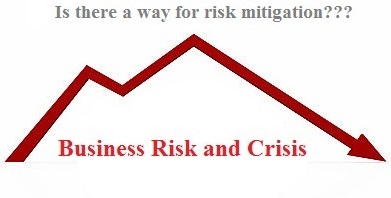Project Risk Planning Process: The Key Steps
 Any project always generates a kind of challenge that makes the project manager find efficient ways to respond to various threats and uncertainties that may jeopardize the successful completion. Implementation of the risk planning process lets the manager to solve the challenge by planning for potential risks and developing solutions that reduce the likelihood of risk occurrence and mitigate the negative impact of the risks.
Any project always generates a kind of challenge that makes the project manager find efficient ways to respond to various threats and uncertainties that may jeopardize the successful completion. Implementation of the risk planning process lets the manager to solve the challenge by planning for potential risks and developing solutions that reduce the likelihood of risk occurrence and mitigate the negative impact of the risks.
When you start implementing your project endeavour you need to plan and manage for potential risks; otherwise, you’re likely to fail with achieving the objectives and goals of the project. Designing and implementing a risk management plan template will help you handle the challenge.
Risk planning is one of the most important components of the Project Implementation Guide as it helps you to understand how to plan for potential risks affecting the implementation of your endeavour and minimize the likelihood or consequence of unpleasant and negative results that may jeopardize the achievement of project goals and objectives.
Planning for Project Risks
What should you know when starting planning for potential risks? First of all, the common reasons for risk occurrence. Such information will help you determine which direction to choose. Here are several reasons why risks may occur within a typical project:
- Changing circumstances, updates and new developments.
- Detailed elaboration and further refinement of the overall project planning process.
- Changes to the constraints (like scope, time and budget).
- Changes to the initial project documentation (like Project Charter) resulted from further discussions and negotiations with the stakeholders.
Usually the reasons all together influence the project, so you need to consider every reason carefully when creating a blueprint for a proactive approach to risk management. The process of creating solutions and using specific methods for reducing occurrence of potential risk and mitigating the negative impact of the risks is called project risk planning. Here’s a more detailed definition of this process.
Project Risk Planning is a process for identifying how to carry out the activities of project risk management. Its purpose is to determine actions to efficiently respond to the identified risks that have a positive or/and negative effect on at least one project objective (such as cost, scope, performance, time). The risk planning process should result in developing a feasible and efficient plan for minimizing risk occurrence rate and exploiting available opportunities.
Risk planning is a necessary component within the overall project management process. It has some benefits to a performing organization. For example, if you practice effective risk planning procedures, you gain the following benefits:
- Saving both financial and non-financial resources.
- Increasing the efficiency and stability of activities and operations.
- Reducing legal liability.
- Protecting property and people involved in the project from harm and injury.
- Protecting and strengthening the reputation of your organization and employees.
- Increasing the likelihood of successful implementation.
The Key Steps
Before you can develop a risk management plan template you need to identify and evaluate potential risks and examine applicable options for risk elimination or at last mitigation. The following are the three high-level steps to planning for project risks. These steps are usually taken prior to the design and implementation of the risk management plan (the steps are explained and described in detail in the PM Guidelines).
Step #1: Identify Potential Loss Exposures.
Because every activity within your project may cause losses you need to control and monitor potential exposures to loss. But you can’t make effective decisions without having the risks identified.
The first step requires you to identify potential risks that may harm your project. In order to take the step, you’ll need to make a list of project goals and objectives and then associate every goal and objective with potential threats and uncertainties that may cause a loss. For example, your project’s primary goal is to develop a software product. Potential risks surrounding this goal are poor usability, product malfunction, improper functionality, user dissatisfaction, etc.
Step #2: Evaluate the Risks.
When you list all of your goals and associated risks your next step is to evaluate those risks. As a process the evaluation includes two components:
- Assess Frequency (the probability of each risk to become real).
- Estimate Severity (the possible effect and cost of risk occurrence to the performing organization).
In order to evaluate risks you need to determine both components. For example, your software product is developed and users try its functionality. For such a case you need to assess the frequency that users will fail with using the software because of malfunction; also you need to estimate the severity of the failure risk.
Step #3: Examine Applicable Options.
When the risks are identified, their frequency is assessed and severity is estimated, your next step is to examine all the appropriate options for managing those risks. This step requires you to select a management technique. There are five common techniques, such as Avoidance, Prevention, Mitigation, Retention and Transfer. Please read this publication to learn more on these techniques.
Proceed to Plan Development
When all the steps are taken the process of project risk planning is regarded as almost completed because there is one pending task – to develop a template of the risk management plan. The next article of the Project Implementation Guide will tell you how to design and implement such a plan.














